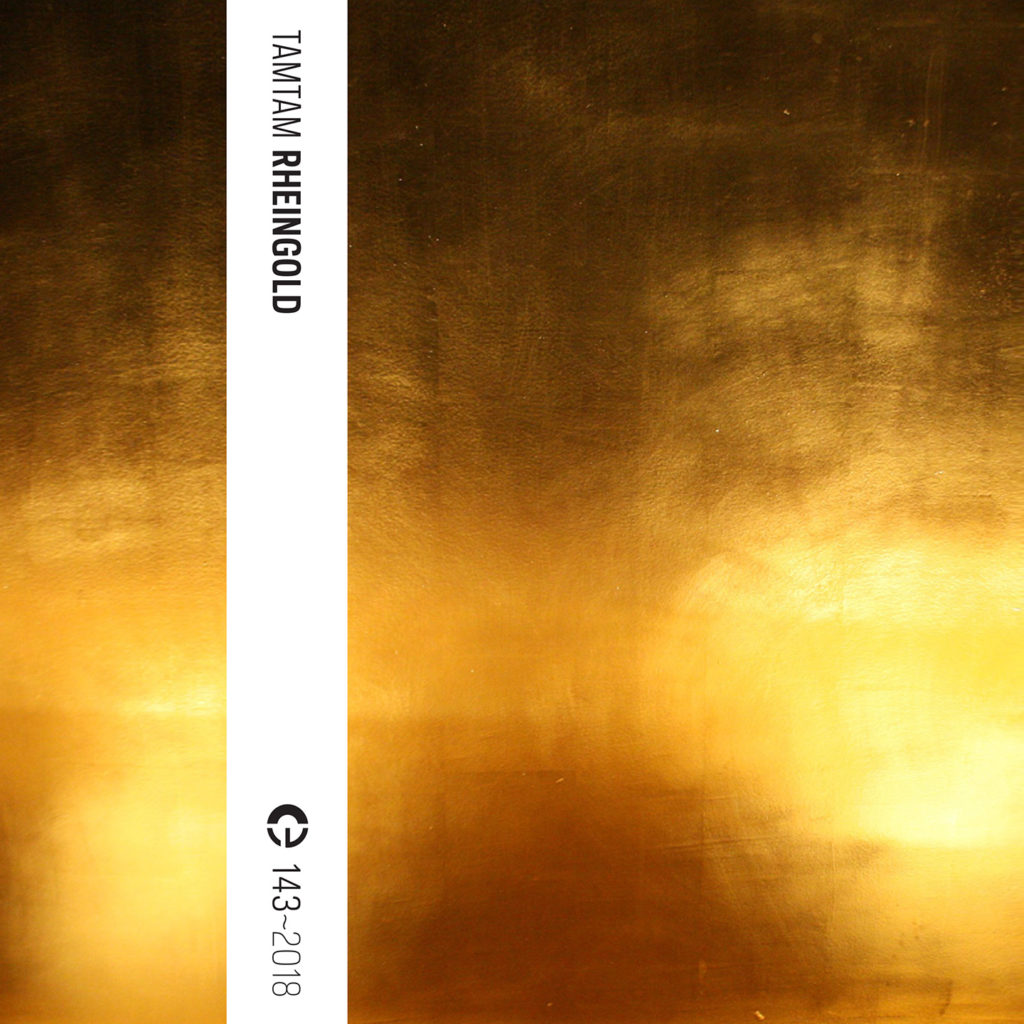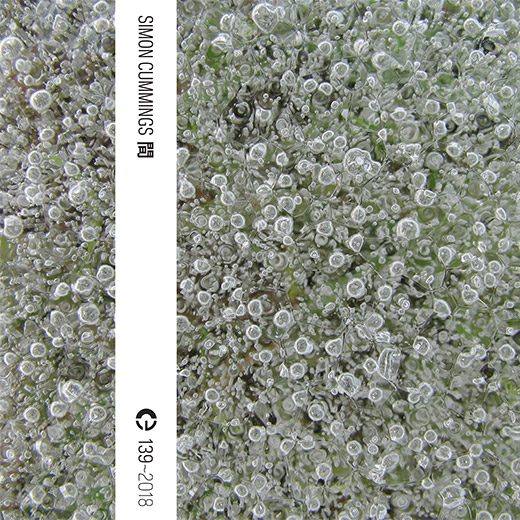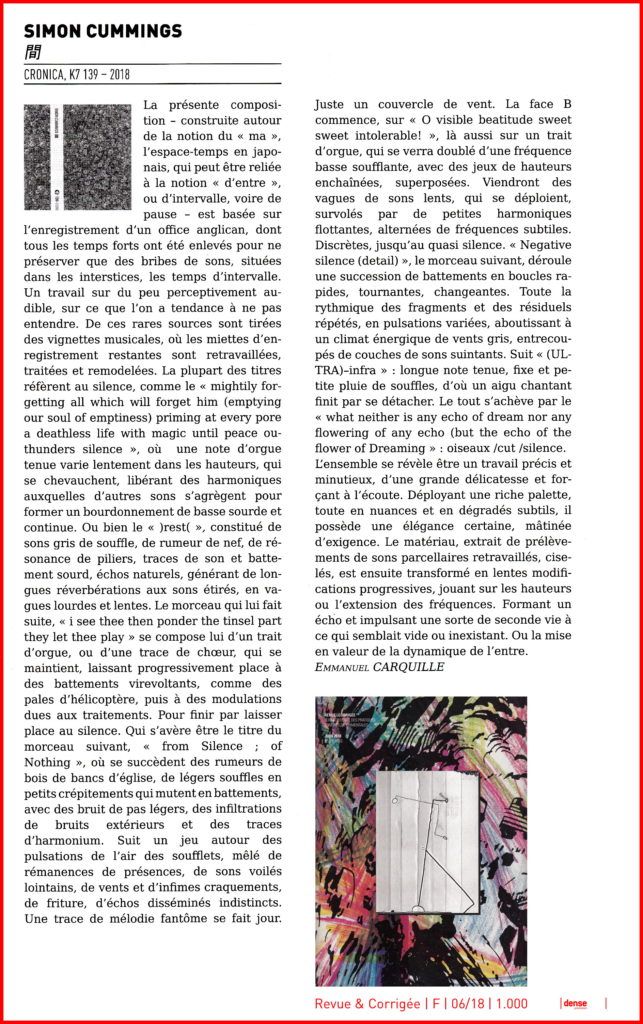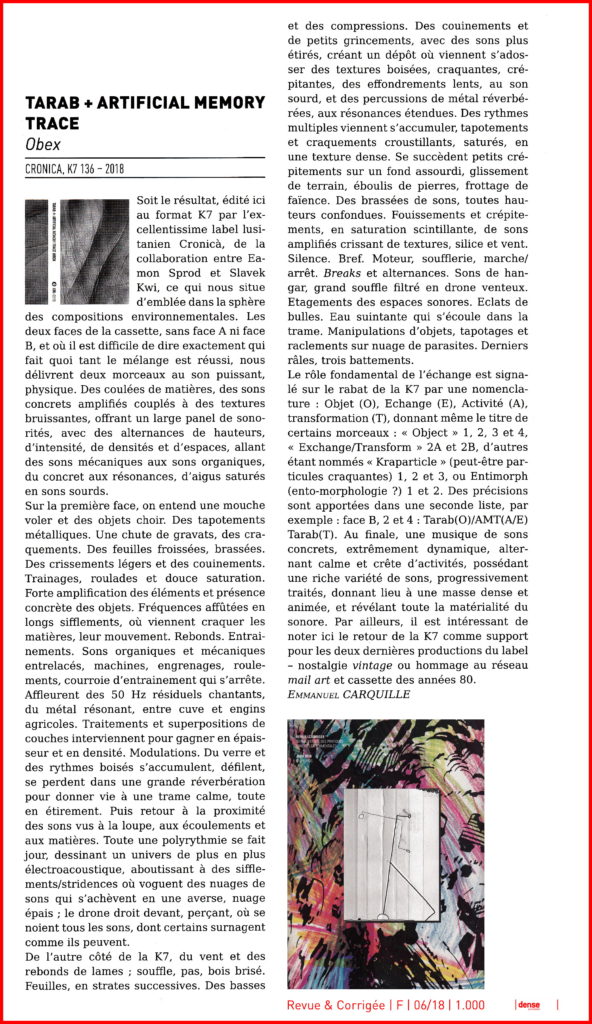
The collective Portuguese label Crónica has been bringing cutting edge, genre defying music since 2003 – and no signs of stopping here. This is SÃria‘s debut (aka Diana Combo) and its an assortment of collaborations – field recordings, voice and vinyl records. At first, on Por Riba, (partly recorded by John Grzinich) it’s quite a soothing, almost meditative blend of silky song and lightly vibrating drone electronics, with some subtle percussion. The setting is spare and dreamy, though it seems like we are in daylight in this adaptation from a recording of Catarina Chitas by Michel Giacometti.
Her use of field recordings on A Lua da Eva emphasize that the most simple day-to-day sounds really can fit into the context and texture of a song with music by Lemures. And however fleeting and retrospective, these feel like songs to me, albeit non-traditional songs that are made up of disparate effects: from open circuits to buzzing crickets to lapping water and people speaking to each other in the background.
There’s an intense stillness to a track like Canção da Mulher Cão with its simple crackle and lightly shifting chords, her voice entering like a lullaby. It was written for performance with music by Birds of Delay and Antoine Chessex. The title translates to “Song of the Dog Woman†which offers even more mystery – is she an ancient diety, or someone who rescues strays? In her whispers that wrap between distended organ chords, there’s a relegated innocence to the hushed space.
“The lyrics and melodies emerged and took shape spontaneously and rapidly, being the fruit of a prolonged thought about what seems more banal, or more eminent, or more obscure. Only later were added the layers of vinyl records and other recordings that accompany each moment or episode of this serene tidal wave.â€
Describing the sound she’s made here is pretty spot-on, though the practical and the intangible collide softly as I continue my deep listening from the luxe Raiva into the slightly more foreboding Amor de Quem where a depressed guitar hum rides low with additional vocal treatment of echoes. It’s a gray area, this unspoken love from who?
On Gloria, which flows into the previous track, Combo sings in English for the first time about “Jesus died for your sins..†being freely adapted from Patti Smith. It’s the first time where a semblance of a beat pops up, it’s a sing-song style with a chant guise. As it drifts away my standout track tacitly surfaces, Senhora do Almortão -adapted from Lavoisier‘s version of this traditional song. With music by Svarte Greiner another mystery lady materializes, and I’d like to keep it that way in all its silencing spectacle.
This same inebriating wash of meditative music continues to flow expertly into the ambience of Maremoto. With music from Luciano Cilio the ocean seems to be cresting as her echo-ey song drifts from top to mid to background, sinking into the open waves and vinyl imperfections that fade in and out. Finally on the title cut she works with one of those rare artists who aren’t heard from often enough, Joe Colley.
A dizzying piece with echoes and sound effects, mixed, layered, cut-up and collaged back together, the faded and unexpected mirroring the smooth cerebral and emotive voice. A sensual, elusive work that could be played for hours on end to sooth the daily grind of virtual savages and ward off other creeps. I’m lost in music, one of the best tapes for 2018! TJ Norris
via Toneshift









